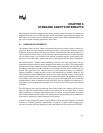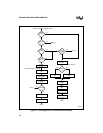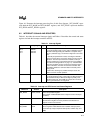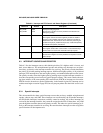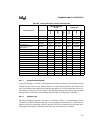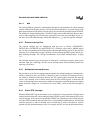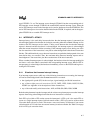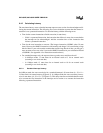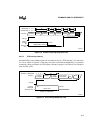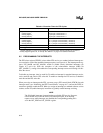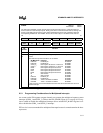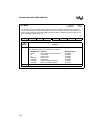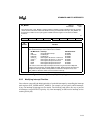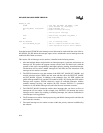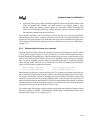
8XC196NP, 80C196NU USER’S MANUAL
6-8
6.4.2 Calculating Latency
The maximum latency occurs when the interrupt request occurs too late for acknowledgment fol-
lowing the current instruction. The following worst-case calculation assumes that the current in-
struction is not a protected instruction. To calculate latency, add the following terms:
• Time for the current instruction to finish execution (4 state times).
— If this is a protected instruction, the instruction that follows it must also execute before
the interrupt can be acknowledged. Add the execution time of the instruction that
follows a protected instruction.
• Time for the next instruction to execute. (The longest instruction, NORML, takes 39 state
times. However, the BMOV instruction could actually take longer if it is transferring a large
block of data. If your code contains routines that transfer large blocks of data, you may get a
more accurate worst-case value if you use the BMOV instruction in your calculation instead
of NORML. See Appendix A for instruction execution times.)
• For standard interrupts only, the response time to get the vector and force the call
— in 64-Kbyte mode, 11 state times for an internal stack or 13 for an external stack
(assuming a zero-wait-state bus)
— in 1-Mbyte mode, 15 state times for an internal stack or 18 for an external stack
(assuming a zero-wait-state bus)
6.4.2.1 Standard Interrupt Latency
In 64-Kbyte mode, the worst-case delay for a standard interrupt is 56 state times (4 + 39 + 11 +
2) if the stack is in external memory (Figure 6-2). In 1-Mbyte mode, the worst-case delay increas-
es to 61 state times (4 + 39 + 15 + 3) (Figure 6-2). This delay time does not include the time need-
ed to execute the first instruction in the interrupt service routine or to execute the instruction
following a protected instruction.




